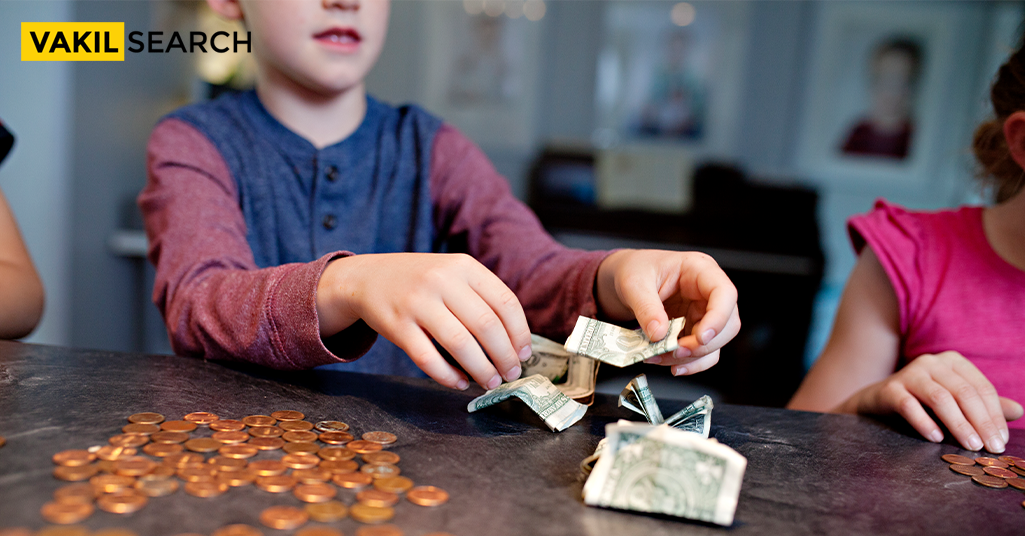In recent years, there has been a lot of talk in the media about child labour. And rightfully so, child labour is abhorrent and needs to be eradicated as quickly as possible. But while we may want to take action against child labour in other parts of the world, what about in India? Indian laws protect children in various ways. For example, the Factories Act of 1948 sets limits on working hours for children aged 6 to 14 and requires parental permission for any work over 8 hours a day. The Employment of Children (Prohibition) Act of 1973 sets similar restrictions on ages 9 to 14 and makes it illegal to employ a child in an hazardous or dangerous occupation. And the Juvenile Justice (Care and Protection of Children) Act of 1986 provides special protections for children below the age of 18 who have been involved in criminal activity. All of these laws provide some level of protection for children, but they are not foolproof. As with any law, there can be abuses that go unchecked. So if you are worried about your child working in an unsafe environment, it is essential to speak with an attorney about your specific situation.
Major Child Issues In India
India, a vibrant and diverse nation, continues to grapple with significant challenges when it comes to safeguarding its most vulnerable citizens – children. Child labor, exploitation, lack of access to education, and healthcare are just some of the issues that plague the nation. To address these concerns, India has established a robust legal framework aimed at protecting children and promoting their well-being.
Indian Laws To Protect Children
The Employment of Children Act, 1938: This legislation aims to regulate the employment of children and prohibits their involvement in hazardous occupations. It sets a minimum age for employment and restricts working hours for children.
The Factories Act, 1948: This act prohibits the employment of children below 14 years of age in factories and regulates working conditions for young adults.
The Mines Act, 1952: This act prohibits the employment of children below 18 years of age in mines and regulates working conditions for young adults.
The Apprentice Act, 1961: This act regulates apprenticeship programs for young people, ensuring they receive proper training and are protected from exploitation.
The Infant Milk Substitutes, Feeding Bottles and Infant Foods (Regulation of Production, Supply and Distribution) Act 1992: This act aims to promote and protect breastfeeding and regulates the marketing and distribution of infant milk substitutes.
The Pre-Natal Diagnostic Technique (Regulation and Prevention of Misuse) Act 1994: This act aims to prevent sex-selective abortions and regulates the use of pre-natal diagnostic techniques.
The Juvenile Justice (Care and Protection of Children) Act 2000: This act provides a comprehensive framework for the care and protection of children in need of special care and protection, including children who are victims of crime or abuse.
Right to Education (RTE) Act, 2009: This landmark legislation guarantees free and compulsory education for all children aged 6 to 14 years. It aims to ensure that all children have access to quality education and promotes inclusivity and equity in the education system.
Indian Laws for Child Protection
Indian law provides for the protection of children from all forms of violence, neglect, and exploitation. The Child Welfare Act of India sets out specific provisions for the care and protection of children, including minimum age requirements for placement, procedures for investigating allegations of child abuse and neglect, and a host of other provisions designed to ensure that children are adequately protected. In addition, states have enacted their own statutes with similar protections.
The indian laws protect children based on the principle of jus commune (common law), which places emphasis on the autonomy of the individual. This philosophy allows for a great deal of flexibility in how laws are applied to different situations, permitting courts to develop their own standards in response to particular cases. This gives rise to a variety of unique approaches to child protection within India.
One important principle that Indian child protection law upholds is the concept of family responsibility. This doctrine holds that parents are primarily responsible for the care and well-being of their children, and that any party who knowingly or negligently harms a child can be held liable. This includes parents as well as other caregivers such as grandparents, aunts, uncles, or babysitters.
In cases where allegations concerning child abuse or neglect arise, Indian law requires authorities to take appropriate action in order to protect the welfare of the child. This may include placing the child with relatives or friends outside of the home if it is deemed necessary; obtaining emergency protective services; filing criminal charges against those responsible.
Indian Laws Related to Child labour
India has a number of laws that protect children from exploitation in the workplace. The Child Labour (Prohibition and Regulation) Act, 1986 prohibits employment of children under the age of 12 in any form of work. The Minimum Age Rules, 2004 set the minimum age for employment of children at 16 years. The Working Women (Protection of Rights on Workplace) Act, 1992 protects women workers from sexual harassment and other forms of discrimination in the workplace. The Factories Act, 1948 sets out specific standards for working conditions in factories. India also has a federal law, the Human Rights Code, which sets out certain rights that all citizens are entitled to.
Indian Laws Related to Child Abuse
There are a number of Indian laws protect children. The Indian Penal Code (IPC) sets out the criminal offences related to child abuse and neglect. These include physical, sexual and emotional maltreatment of children. The IPC also lays down penalties for these offences, which can be severe.
The Protection of Children from Sexual Offences Act, 2012 (POCSO Act) is a piece of legislation that focuses on child sexual abuse. The POCSO Act defines child sexual abuse as any act or omission that involves sexual contact or penetration between a child below the age of 12 years and an adult, with either the consent or lack of consent of the latter. This act provides for punishment ranging from two years in prison to life imprisonment. Furthermore, anyone who helps someone commit an offence under the POCSO Act faces punishment too.
Another law relevant to child abuse is the Juvenile Justice (Care and Protection of Children) Act, 2000. This act provides for juvenile offenders aged between 16 and 18 years to be sent to special institutions instead of prison if they have committed crimes that would have landed them in prison if they were adults. In order to qualify for this treatment, juvenile offenders must have shown good conduct during their trial and must have pleaded guilty to at least one crime punishable with imprisonment of more than six months.
Indian Laws Related to Domestic Violence
In India, battering or abusing a spouse or partner is considered a criminal offence. This means that in cases of domestic violence, the abuser can be sentenced to jail time and/or fined as per the many Indian laws protect children. In addition, the victim can file for a restraining order against the abuser.
There are also specific laws related to child abuse. Under Indian law, anyone who beats or abuses a child under the age of 12 can be sentenced to up to three years in prison. If the child is between 12 and 16 years old, the abuser can be sentenced to up to seven years in prison. Anyone who beats or abuses a child more than 16 years old can be sentenced to 10 years in prison.
The Indian government has made it its mission to protect children from domestic violence and abuse. In 2013, India adopted the National Crime Records Bureau’s (NCRB) definition of Domestic Violence as ‘any incident where an individual uses physical force or power against their spouse or cohabitant with the intention of coercing them into sex.’ This definition includes situations where one partner withholds sex, pushes, shoves, hits or kicks the other; threatens suicide; makes derogatory comments about sexual performance; refuses to provide financial support; and forbids communication with friends or family members outside of their relationship.
According to recent data, there were over 1 million incidents of domestic violence reported in India in 2012 alone. It is clear that there is still work to be done in order to protect children from domestic violence.
Indian Laws Establish Punishment for Abusive Parents
In India, there are a number of laws that protect children from abusive parents. These laws vary from state to state, but in general, Indian law establishes punishment for abusive parents. This punishment can include jail time, financial compensation for the child, or both.
Abusive parents can face many penalties under Indian law. For example, in some cases where a parent threatens or physically assaulted their child, the parent could be arrested and fined. If the abuse is severe enough, the child may also be able to file a police report and get help from social services.
In some cases, where a parent is not physically abusive but engages in emotional abuse, they may still be punishable under Indian law. This type of abuse includes shouting at or humiliating the child, making them feel like they are worthless or inferior, and withholding love or affection. The abuser may also be required to attend counseling or therapy sessions.
Punishment for abusive parents varies depending on the severity of the abuse. In some cases, such as where physical violence is involved, abusers can face lengthy prison sentences and heavy fines. On the other hand, emotional abuse may only result in minimal penalties such as a fine or community service.
Indian Laws Make it Easier to Remove a Child from an Abusive Home
Indian law makes it easier to remove a child from an abusive home. The procedure is outlined in the Indian Child Welfare Act of 1979. This law establishes procedures for petitioning courts to remove a child from an abusive or neglectful home. There are several grounds for removal, including if the child is at risk of physical or emotional harm, if the parents are unable to provide proper care, or if there is evidence of sexual abuse. Courts generally grant petitions to remove a child if there is sufficient evidence to support the allegations.
The Indian Child Welfare Act does not mandate that children be placed with family members outside of their home country. If families want their children to remain in India, they can apply for guardianship through the government. In cases where guardianship is granted, the parents must comply with all court orders and must provide regular updates on the child’s status.
Indian Laws Protect Children from Abuse
In India, child abuse is a punishable crime. Child abuse is defined in Indian law as any act that results in physical or mental harm to a child. Indian law also includes intentional omission of necessary care and treatment of a child that may cause physical or mental harm.
Indian law protects children from abuse by their parents, guardians, or other caregivers. The Indian Penal Code (IPC) covers offenses against children, including rape, kidnapping, and death caused by parental neglect or maltreatment. Penalties for these crimes can include imprisonment for up to 20 years. In addition, the IPC allows for civil suits against those who harm children.
The Prevention of Cruelty to Children Act, 1986 sets out specific guidelines for protecting children from abuse. This legislation establishes procedures for reporting suspected cases of child abuse and makes it a criminal offense not to report such incidents. The Act also provides for the establishment of special units to investigate allegations of child maltreatment and implement measures to improve the welfare of children.
The Indian Penal Code
The Indian Penal Code (IPC) is the primary criminal law of India. It consists of Part I, covering crimes against humanity, Part II, covering robbery, extortion, and murder, and Part III, covering offenses relating to property. The code also sets out provisions for the maintenance of law and order and the protection of women.
Crimes covered under the IPC include rape, molestation, kidnap, arson and vandalism. Penalties for these crimes range from imprisonment up to life imprisonment. Section 376(2) of the IPC states that ‘whoever voluntarily causes hurt to any person with the intent to cause death or grievous hurt shall be punished with imprisonment for life, or with imprisonment which may extend to ten years, or with fine.’
The code also includes specific provisions that protect children from abuse. For example, Section 20(1) states that ‘No child below the age of twelve years shall be compelled to perform any work other than such as may be necessary for his welfare or education.’ Additionally, Section 21 states that ‘No child below the age of fourteen years shall be employed in any factory or workshop except with the written consent of his parent or guardian.’
Child Marriage
Child marriage is a prevalent problem in India, where girls are married off as young as 10 or even younger. This practice is illegal in India, but it continues to occur because of cultural and religious influences.
The Indian government has enacted a number of laws to protect children from child marriage. The Marriage Laws Act 1955 makes it illegal for anyone under the age of 18 to marry, and the Child Marriage Restraint Act 2000 makes it an offence to marry a girl below the age of 16.
The government also operates a number of programs to help children who have been forced into marriages escape from their abusive marriages. These programs provide shelter and support for children who have been victims of child marriage, and they offer them education and employment opportunities.
Despite these efforts, child marriage remains a problem in India. There are still many girls who are married off before they reach the age of 18, and these marriages often lead to exploitation and abuse. The government must do more to enforce its existing laws and Programs so that all children in India can enjoy the protection they deserve.
Child abuse is a serious crime that can involve physical, sexual, and/or emotional abuse of a child. If you are the victim of child abuse, you may feel scared and alone. You may not know who to turn to for help. But you don’t have to be alone. Vakilsearch can help you take legal action against your abuser. Vakilsearch has years of experience helping victims of child abuse win their cases in court. Our skilled attorneys will work hard to help you build a strong case against your abuser. We will employ all available evidence to show that your abuser was guilty of the crimes of child abuse. We will also work hard to protect your privacy during this difficult time. We will keep all information confidential, including the identity of your abuser. You can trust Vakilsearch to fight for your rights and protect your privacy.
FAQs
1. What is care and protection of children in India?
The care and protection of children in India involves ensuring their rights to grow up in a family environment, protected from violence, abuse, and exploitation. This includes measures to provide alternative care for children who are without family care.
2. Who protect child rights in India?
Child rights in India are protected by various entities, including the government, non-governmental organizations, and international organizations such as UNICEF. The Juvenile Justice (Care and Protection of Children) Act, 2015, is a key legislation that safeguards the rights of children in India.
3. Who is responsible for child protection in India?
The responsibility for child protection in India lies with the government, specifically the Ministry of Women and Child Development, as well as various other stakeholders, including civil society organizations and the community.
4. What are the 4 pillars of child rights?
The four pillars of child rights are the right to survival, the right to development, the right to protection, and the right to participation. These pillars form the basis of the United Nations Convention on the Rights of the Child (UNCRC).
5. What are child right rules?
Child rights are defined by the UNCRC, which sets out the civil, political, economic, social, health, and cultural rights of children. In India, the Juvenile Justice (Care and Protection of Children) Act, 2015, and other laws and policies govern child rights and protection.
6. What the Indian Constitution says about child rights?
The Indian Constitution contains various provisions related to child rights, including the right to education, the prohibition of child labor, and the protection of children from exploitation. The Directive Principles of State Policy also emphasize the importance of providing for the welfare of children.
Also, Read:










